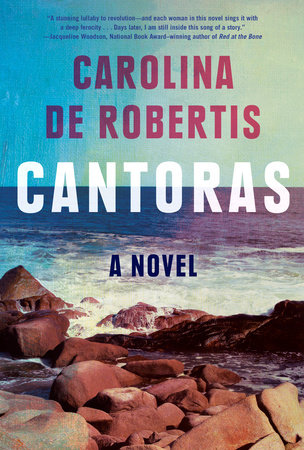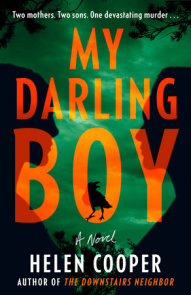READERS GUIDE
The questions, discussion topics, and reading list that follow are intended to enhance your reading group’s conversation about Cantoras, the radiant new novel from Carolina De Robertis, author of The Gods of Tango, Perla, and The Invisible Mountain.Questions and Topics for Discussion
1. Examine the symbolism of the Prow. Why do you think they choose to name it as they do? In what way is life at the Prow the antithesis of life in Montevideo? How does each woman use the house and Cabo Polonio to heal and expand? In what ways do the beach and the shack fulfill a different need for each woman while still proving their common need to be themselves?
2. Discuss Paz’s first sexual encounter with Puma. Why does she insist that they cannot understand when she recounts the story to her friends? Are the other women right to judge and label the encounter? How does Paz come to view this early experience when she is older? What does she mean when she thinks to herself, while working in La Piedrita, “What I can’t give to Puma I will give to the Pumas of the world” (246)?
3. Explore the linguistic and syntactic decisions De Robertis makes as she narrates instances of actions of the oppressive authority. Why do you think she opts for fragmented, stream-of-consciousness sentences? Consider the similarities and differences in the recounting of Paz, Romina and Malena’s experiences.
4. If you could go back in time and visit one of the women, who would you like to have lunch with? And why?
5. Examine the theme of identity as it is portrayed in the novel. How are names used as a vehicle of identity, both for and against the women? Think about Malena’s assigned number in the clinic, the renaming of Anita (La Venus), and the end of the novel when the women discuss the variety of names they now have to describe their sexualities. What power is there in a name, a label? Who gives it power?
6. On page 115, while discussing Flaca and La Venus’s relationship, Romina tells Paz, “We don’t have lasting things.” Who is the “we” she is referring to? What sort of “things” don’t last for them, and why? For something to be a “lasting thing,” must it never experience change? Do you believe by the end of the novel that Romina would still believe this to be true?
7. Explore La Venus’s relationship with Ariella. What does La Venus find so alluring about her new lover? What parts of herself is she able to explore in this relationship that she could not with Flaca? Why do you think La Venus doesn’t tell Ariella her given name? How does this relationship—and its eventual dissolution—change the course of La Venus’s life? As you answer this question, consider La Venus’s decision to leave her husband; her relationship with Mario; and her eventual career as an artist.
8. Jacqueline Woodson had this say about CANTORAS: ‘”a stunning lullaby to a revolution.” What do you think she means by this ? What would you say to Ms. Woodson to continue the conversation?
9. Discuss Romina’s commitment to the resistance. What fuels it? What form does it take, and how does it interact with her trauma over time? Consider, as you answer this question, Romina’s relationship with Felipe and with her parents; her family’s history; her job as a history teacher; and the specter of the Only Three.
10. When the dictatorship ends, both Paz and Flaca experience a kind of sadness, in conjunction with relief. Discuss this sadness. From what does it originate in both women? What is the novel suggesting about time lost to silence and suppression?
11. On page 182, Romina tells La Venus, “How do we restore what’s broken? If you shatter a plate, it’s never whole again.” What does the novel suggest about the possibility of repair after enormous trauma? What is necessary for individuals—and entire countries—to recover?
12. Examine each woman’s relationship with her parents. Which characters’ parents give them strength? Does familial rejection hold them back or propel them forward to create “found family”? How does each woman’s relationship with her parents affect the ways in which she understands and interacts with both the dictatorship and her own identities?
13. In this novel, silence is both a way of safeguarding and hurting oneself. How does your view of Malena change from her mysterious introduction to her tragic ending? Did Malena only have herself to blame for suffering in silence, or did her friends take Malena’s unwavering presence and quiet but powerful support, for granted? Do you agree with Paz that “silence killed her” (313)? Why or why not?
14. Discuss the conclusion of the novel, paying close attention to the theme of belonging. What kind of belonging did the characters crave as young women living under the dictatorship? What kind of belonging did they rebel against? Do they feel, at the end of the novel, that they belong? Why or why not?
15. How do you feel about the time gap at the end of the novel? Are you surprised by any of the characters and what they are doing now? How do you deal with the reality that the horrors recounted here are not pure fiction, they existed within the lifetimes of those alive today and for some are still occurring?




















